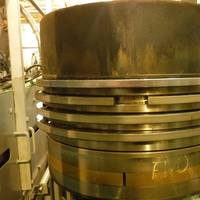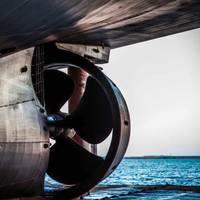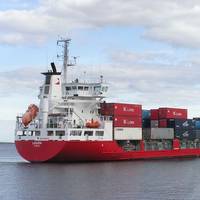Shell Launches New Trunk Piston Engine Oils

Shell Marine has unveiled its next generation Shell Argina and Shell Gadinia trunk piston oils for the medium-speed engine market. As owners face pressures to shift toward cleaner fuels that address emissions regulations, Shell said demand for distillates and low-sulphur heavy fuel oil will only increase as shipping approaches a global fuel sulphur content cap of 0.5 percent, imposed by IMO from 2020. Already, dual-fuel engines are taking an increasing share of the medium speed market.
LUKOIL Marine Cylinder Oil Approved by MAN and WinGD

Ready for the 2020 sulphur cap? There is a big change in fuels ahead of us and the fuel suppliers are busy looking into several options. However, regardless of whether de-sulphurisation, MGO or distillate blends or any predominantly hydrocarbon blend with a maximum of 0.5 percent sulphur content or a 0.1 percent limit in ECA - “We are ready,” said Stefan Claussen, Technical and Marketing Director of LUKOIL Marine Lubricants. In order to offer the best possible lubricant solutions in the years leading up to 2020 and beyond…
Ship Fuel of Choice to Remain Heavy Oil in 2030: New Analysis

A new study by Lloyds Register and University College, London, discusses the prospects of marine fuels in 'Global Marine Fuel Trends 2030', giving insights into future fuel demand for the containership, bulk carrier/general cargo and tanker sectors (which represent about 70% of the global shipping industry's fuel demands). Fuel oil remains the main fuel for deep sea shipping; LNG develops a deep sea bunker market share of 11%; low sulphur heavy fuel oil and hydrogen emerge as alternatives in certain scenarios.
Langh Ship Develops Exhaust Gas Scrubber

Although the sulphur limit for ship fuel in the North Sea and Baltic Sea is 1%, Langh Ship’s m/s Laura sails in the area with whatever fuel the charterer has found in Rotterdam, no matter how high its sulphur content. This is possible because the shipping company has equipped the vessel with a closed loop scrubber that emits exhaust gas that is even cleaner than if the fuel had a sulphur content of no more than 0.1%. Environmental regulations in this sulphur emission control area (SECA) have been tightened such that the sulphur limit for fuel will drop to 0.1% at the start of 2015.
IBIA Delegates Warned of Costs of Unfeasible Distillates Switch
The International Bunker Industry Association (IBIA) was told at its annual convention in Montreal this month that a new report estimates that it would cost $67b over the next five years to implement a wholesale switch from traditional bunker fuels to distillates only for the world merchant fleet. The distillates-only option was also described as “unfeasible”, due to lack of sufficient refining capacity. The report, prepared for the American Petroleum Institute (API) by EnSys Energy & Systems Inc and Navigistics Consulting, highlights the considerable costs of meeting possible stricter air emissions regulations imposed by a revised MARPOL Annex VI and…







